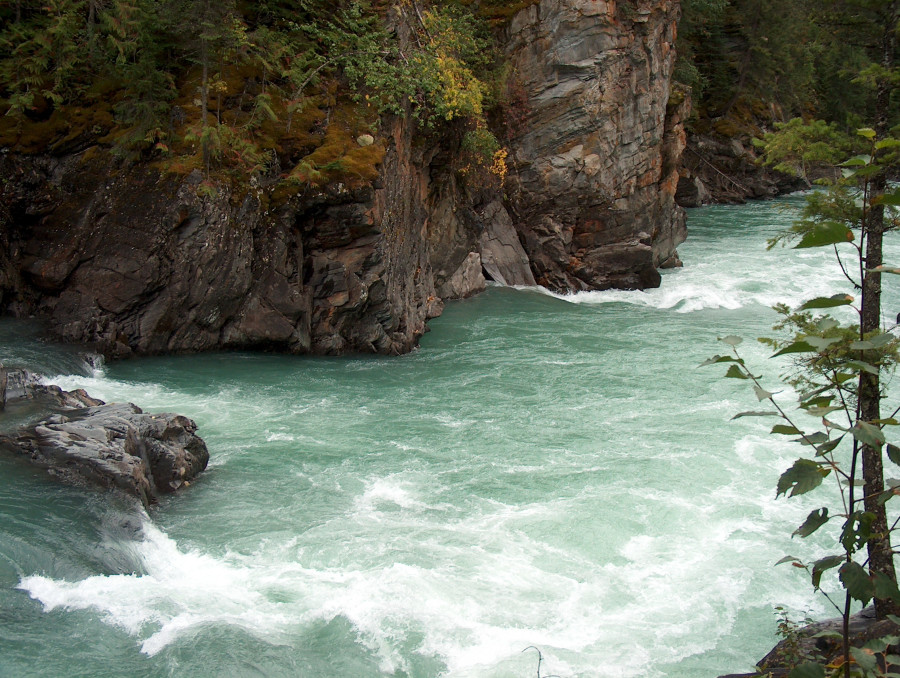Opinion
Freshwater ecosystems
The protection of these ecosystems is vital to advance any developmental paradigm.
Tsewang Nuru Sherpa
Freshwater ecosystems are a biodiversity hotspot that encompass 2.4 percent of all the known species despite the total coverage of only 0.8 percent of the terrestrial surface. Among them, freshwater rivers contain only 0.3 percent of the overall world’s water supply, but they play a significant role in contributing to both terrestrial and aquatic ecosystems. Aquatic ecosystems are a prominent part of the global environment as they contribute immensely to ecological productivity and global biodiversity. In addition to being essential contributors, they also provide a wide array of ecosystem services that range from providing water for drinking and irrigation to providing a suitable habitat for aquatic macroinvertebrates and fishes.
Freshwater ecosystems accommodate the highest concentration of species, compared to terrestrial and marine, as the existence of extensive geographic barriers between freshwater ecosystems has led to high endemism and they cannot be isolated from terrestrial habitats in terms of the hydrologic cycle and freshwater flow.
Fresh water is a finite resource for which there is an increasing demand; the world population is increasing along with an increment in consumption patterns and a changing climate. The principal sources of water resources available for humans are freshwater habitats such as rivers, lakes and wetlands.
Water quality
Anthropogenic interventions have influenced the maximum usage of highly diverse water resources, and as a repercussion, complex mixtures of pollutants through sources like agricultural run off. Industriali-sation, mining and urbanisation have impaired the water quality of aquatic resources. With the increase in water demand and increasing variety of water usage, aquatic resources have been significantly impaired, and their natural functionality of providing ecosystem services has been altered. Water resource like rivers render a plethora of valuable ecosystem services that range from water for domestic purpose to recreation. However, excessive and extractive usage of water resources has outweighed the significance of aquatic biodiversity that lives beneath the water’s surface.
In addition, the direct appropriation of freshwater resources for human consumption, and activities such as excessive extraction of mineral and ubiquitous construction, can reduce the quality of the aquatic habitat, as they can intensify the rate of sedimentation in rivers and lakes. Although aquatic ecosystems are generally known for their resilience to maintain healthy and self-sustaining potentialities despite the extreme variation in both hydrologic and temperature conditions, the ongoing climate change exacerbated by human-induced pressures and extreme environmental challenges imposed on aquatic ecosystems will outweigh the resilience of aquatic ecosystems.
Nepal is lauded for its water resources, but this fact belies the fragile nature of its water ecosystem and the occurrence of seasonal variation in water availability. Being landlocked, Nepal only possesses inland water resources that comprise river systems, lakes, reservoirs and wetlands. These inland water resources total 745,000 hectares of water surface area in Nepal, which is approximately around 54 percent of the total water bodies. Poor management of riverine ecosystems and unregulated riverbed mining in Nepal have increased the level of sedimentation, causing dam blockade and displacement of the entire river system.
Furthermore, water management in Nepal is carried out under the supervision of 10 different ministries among 27 that are dealing with different water-use aspects. The ministries and the departments within the ministries rarely coordinate, and there is very little joint planning in terms of managing freshwater resources in Nepal. The major threats to freshwater biodiversity in Nepal include the modification of water flow as a consequence of hydropower development and rampant surface and groundwater extraction. Excessive urbanisation, watershed and habitat alteration, as well as the introduction of invasive species and climate change, can also be taken as major threats to freshwater in Nepal. Furthermore, this has been exacerbated by the pollution of municipal and rural waterways.
Aquatic biodiversity
The incredible aquatic biodiversity of Nepal encompasses endemic and rare species, but the paucity of regular assessment has imposed an enormous threat to their existence. In addition, despite covering excessive local and global significance, freshwater biodiversity in Nepal, like the riverine system, has received less attention and focus than terrestrial biodiversity. Despite the clear importance drawn towards the essential component of sustainable water resources in Nepal, and to the amelioration of riverine ecosystem development, very few areas of water resources have been studied on a large scale; and the status of freshwater biodiversity in the mid-hills, particularly in the face of climate change, is still unknown.
Thus, the significance of comprehending the interference and interactions of anthropogenic stressors with the ecological status of water sources is very vital in ensuring the effectiveness of water quality and its related aquatic health. The smooth and proper functioning of an aquatic ecosystem is strongly influenced by water quality. Any alteration in water quality can trigger disturbances in the aquatic ecosystem that encompasses a reduction in aquatic biodiversity and shift in biological communities. Freshwater ecosystems should be assessed and protected accordingly to evaluate the present status of the riverine ecosystem, and eventually carry forward any developmental paradigm.
Sherpa is an environmental science graduate.




 16.2°C Kathmandu
16.2°C Kathmandu












